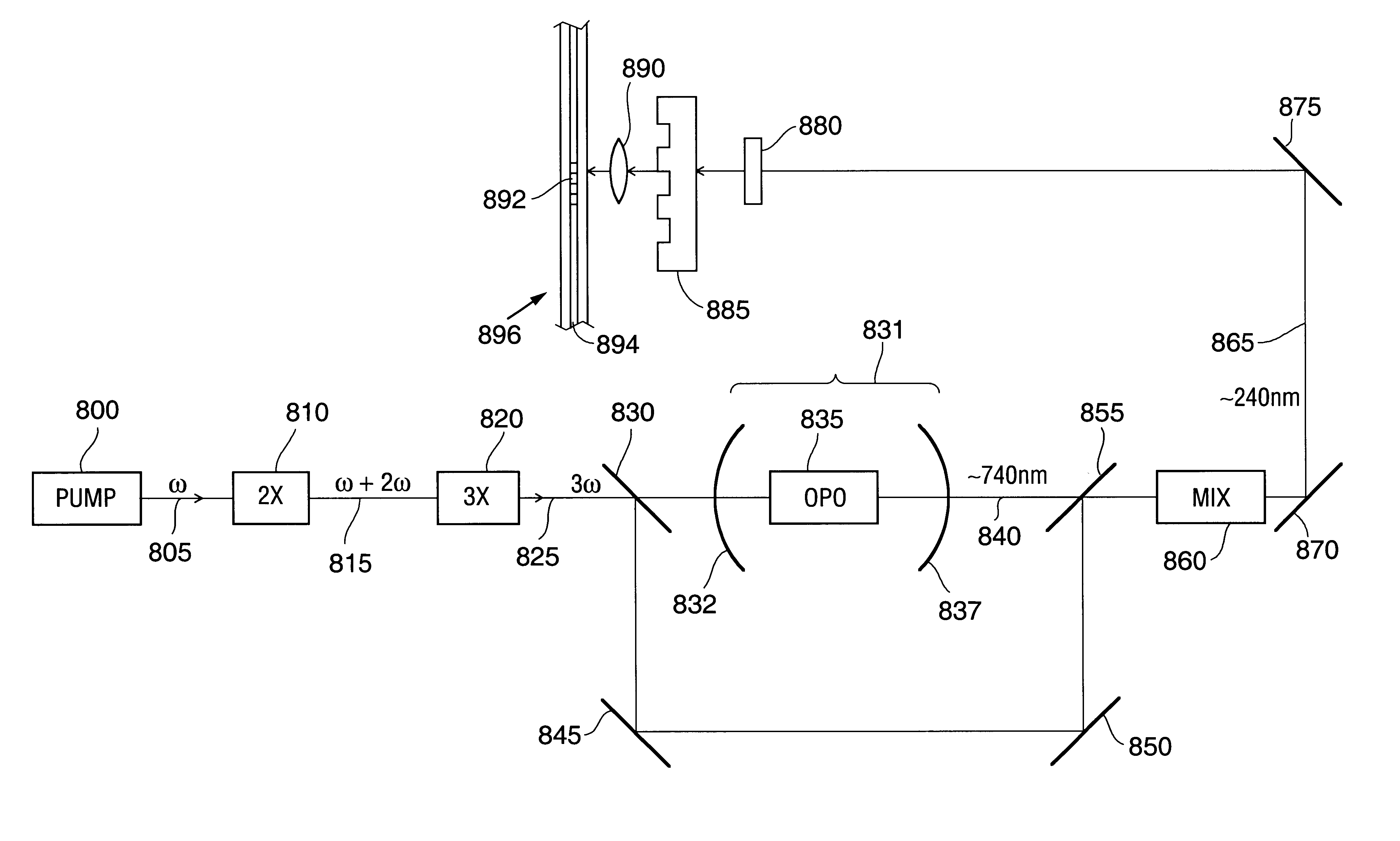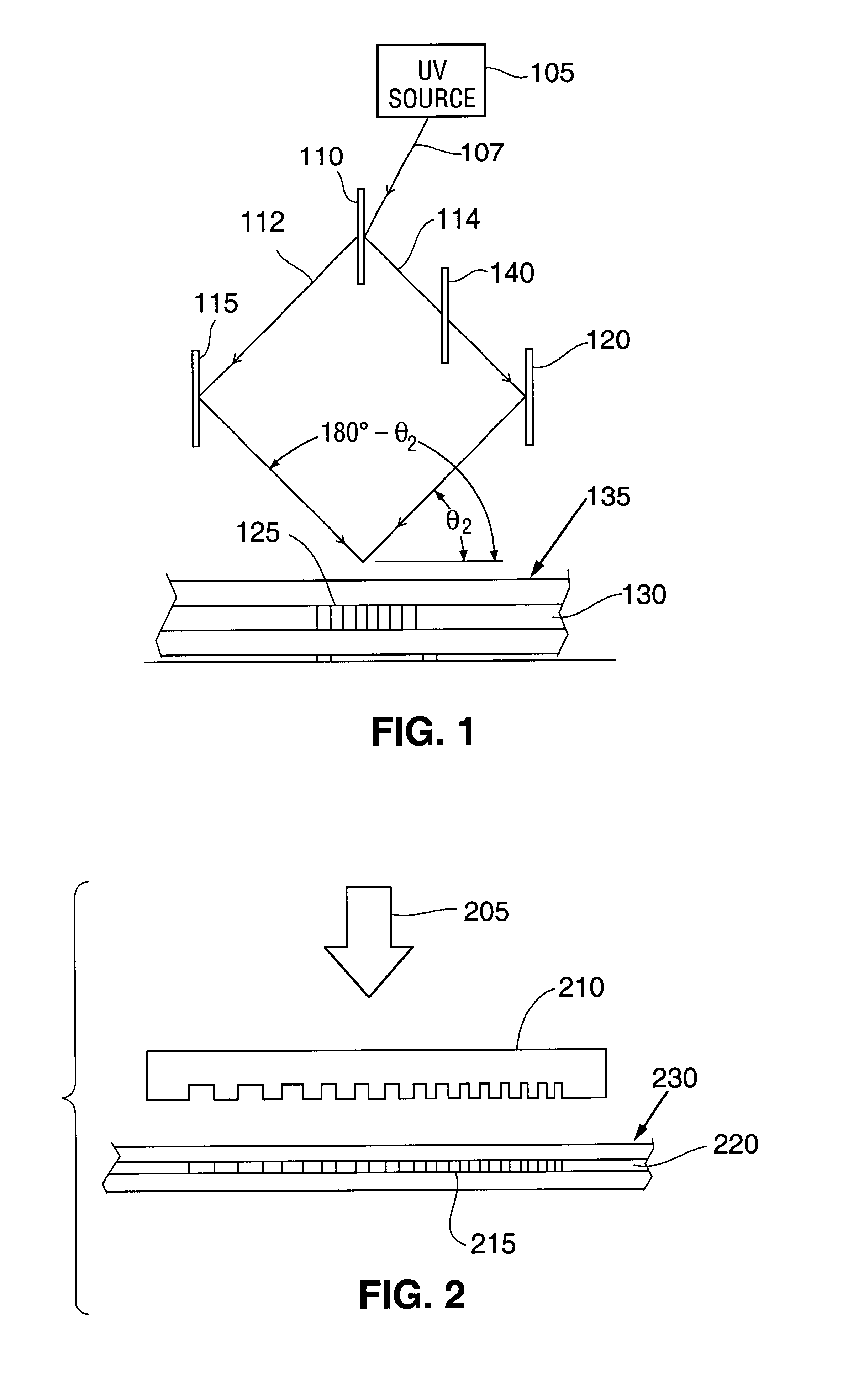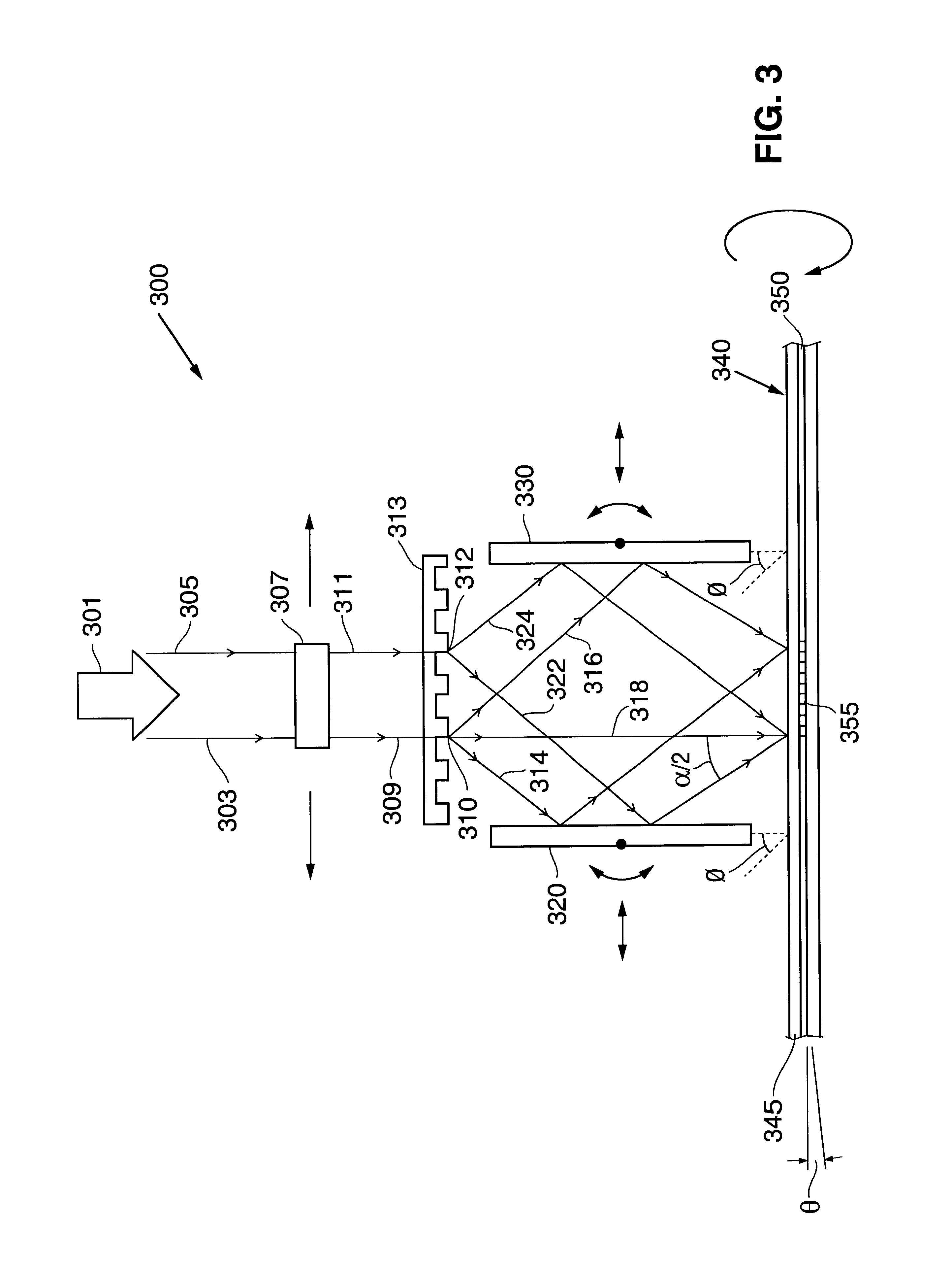Method and apparatus for fiber Bragg grating production
a fiber bragg grating and production method technology, applied in the field of optical waveguide manufacturing, can solve the problems of high operating and maintenance costs, and current sources of ultraviolet light used in fbg production
- Summary
- Abstract
- Description
- Claims
- Application Information
AI Technical Summary
Benefits of technology
Problems solved by technology
Method used
Image
Examples
Embodiment Construction
[0036]A. Fabrication of Bragg Gratings
[0037]There are two basic methods of generating the necessary alternating light and dark regions of an FBG, with many variations of each method. The first is a “holographic” method, wherein two ultraviolet beams are caused to interfere with one another. The resulting interference pattern is projected onto the germanium-doped portion of the fiber. The second basic method is noninterferometric and involves exposure of the fiber to periodic ultraviolet (“UV”) radiation.
1. Holographic Methods
[0038]A basic holographic method is shown schematically in FIG. 1. There, ultraviolet source 105 (typically some form of laser) generates beam 107, which is split into beams 112 and 114 by beam splitter 110. For low-coherence sources, it is advantageous to equalize the path lengths of beams 112 and 114. InFIG. 1, these path lengths are equalized by disposing compensating plate 140 in the path of beam 114. Beams 112 and 114 reflect from mirrors 115 and 120, respe...
PUM
| Property | Measurement | Unit |
|---|---|---|
| wavelength | aaaaa | aaaaa |
| wavelengths | aaaaa | aaaaa |
| wavelengths | aaaaa | aaaaa |
Abstract
Description
Claims
Application Information
 Login to View More
Login to View More - R&D
- Intellectual Property
- Life Sciences
- Materials
- Tech Scout
- Unparalleled Data Quality
- Higher Quality Content
- 60% Fewer Hallucinations
Browse by: Latest US Patents, China's latest patents, Technical Efficacy Thesaurus, Application Domain, Technology Topic, Popular Technical Reports.
© 2025 PatSnap. All rights reserved.Legal|Privacy policy|Modern Slavery Act Transparency Statement|Sitemap|About US| Contact US: help@patsnap.com



